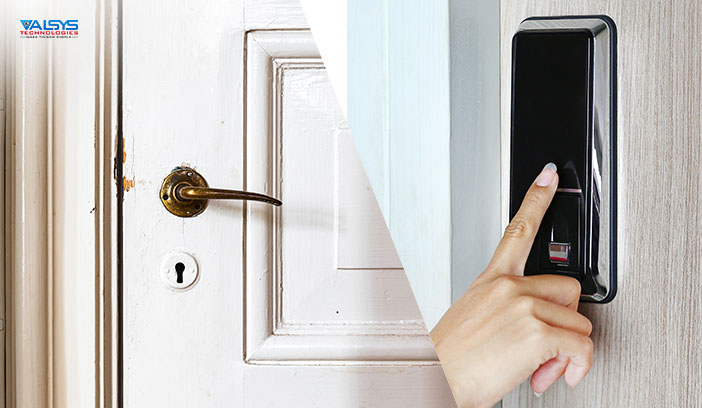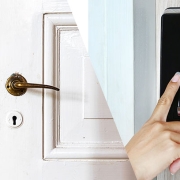The Evolution of Access Controls: Biometric VS Traditional

Access control systems are becoming increasingly popular among businesses due to their security capabilities. With a basic system, businesses can easily keep their employees, confidential information, properties, and all other assets safe. Additionally, many access control systems even contain features that help with payroll issues. For example, tracking attendance and managing personnel.
There are two main types of access control systems — biometric and traditional — each with their own pros and cons. Which form of access control should companies be investing in?
Traditional Access Controls
Before the rise of biometrics, humans have been using traditional access controls for many years. They’re still widely used today in various parts of the world. Some examples include keys and locks and tickets that authorise entry to places. The problem with traditional access control systems, and its main difference from biometric access, is that they allow unauthorised persons to gain access to these keys and tickets, which can cause a security breach. These items can even be forged or duplicated.
Many keys and locks were eventually replaced by systems that grant access with a Personal Identification Number (PIN), which is a numeric or alphanumeric passcode used in authenticating users. It was the first technological advancement in access control and it provided better security compared to the lock and key. However, a PIN could easily be leaked or forgotten, and should someone forget his or her PIN, it was almost impossible to recover.
Today, even with strong cybersecurity, a PIN can easily be hacked with the use of the dark web. This risk continues to pose a threat to many businesses.
Biometric Access Controls
Biometric systems, such as door access systems, are equipped with scanners to record biological data from humans and used for identification and authentication. For example, a fingerprint scanner analyses human fingerprints, stores the recorded fingerprint in a data file and waits for someone to scan his or her fingerprint to access the premises. If it matches a fingerprint in the database, the system grants access. However if it doesn’t, access is denied. Biometric data collected is non-transferable, distinct, and unique.
Biometrics were initially used for crime detection and criminal records. The majority of biometric data was collected and stored in the form of an image or recording. The use of biometrics was limited as users were hesitant to give away their biometric identities. Many assumed that doing so would put them in danger or land them in fraud.
However, as the world became more aware of the accuracy, speed, and security of biometrics, people began to be more receptive to biometric access control systems.
Today, fingerprint authentication is the most common form of biometrics. However, it is just one of many types of biometric access control. Other forms of biometric authentication include retina scanning and facial recognition.
Biometric Access Control Systems to Consider
1. Time Attendance System
A time and attendance system with access control features that assists your company in restricting access to your premises and keeps track of your employee’s entry and exit times. Attendance reporting becomes more efficient, and it even encourages timeliness and productivity within your organisation.
2. Biometric Door Access System
A door access system with a web-based security platform that helps businesses manage personnel, access, and attendance. It also offers video surveillance and system management features. This biometric door access system provides automatic data backup, facial recognition, and alarms to alert you of possible breaches.
Traditional access controls are inexpensive and easy to operate, but biometric systems can provide increased security and greater efficiency. This is because one system can contain multiple features that help a business better manage many aspects of their security.
Valsys Technologies is a licensed security service provider in Singapore that offers a wide range of electronic security solutions to businesses. Speak with us today to learn more about our products.






